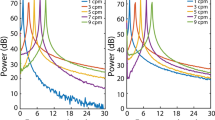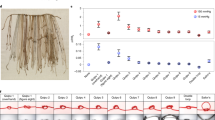Abstract
This paper presents a wireless and passive micro pressure system based on the LC mutual inductance detection mechanism for gastrointestinal (GI) pressure monitoring. The micro pressure system is composed of a sensor capsule (a pressure sensitive micro capacitive sensor in series with an induction coil to form an LC tank) and a detection unit (a detection coil connected with a network analyzer). The pressure variations under measurement lead to changes in the capacitance of the pressure sensor and therefore a shift in the LC tank resonant frequency, quantified by the impedance measurement of the detection coil. The pressure sensor was fabricated using microfabrication processes with key parameters optimized. The in vitro characterization of the micro pressure system recorded a sensitivity of 0.2491 kHz/kPa (−10 kPa to 30 kPa). One-month rabbit stomach pressure monitoring was conducted based on the developed micro pressure system as a confirmation of device long term in vivo stability. Furthermore, rabbit stomach pressure variations before and after food feeding was recorded and compared where three distinctive contraction patterns (random contraction with low amplitude, irregular strong contractions and regular contraction in a cyclic manner) following food feeding were located. Compared to previous reported GI pressure sensors, this LC tank is featured with simple device structure without batteries and electrical components for energy transfer. Both in vitro and in vivo characterization confirm the functionality of the system, which may enable the gastrointestinal motility study in the near future.








Similar content being viewed by others
References
N. M. Prakash, and F. A. Spelman, “A portable monitor for measuring GI motility,” in Proceedings of the 18th Annual International Conference of the IEEE Engineering in Medicine and Biology Society. Bridging Disciplines for Biomedicine., 1996, pp. 34–35 vol.1.
S. D. Feighner, C. P. Tan, K. K. McKee, O. C. Palyha, D. L. Hreniuk, S.-S. Pong et al., “Receptor for Motilin Identified in the Human Gastrointestinal System,” Science, vol. 284, no. 5423, pp. 2184–2188, June 25, 1999.
G. Vantrappen, J. Janssens, G. Coremans, R. Jian, Gastrointestinal motility disorders. Dig. Dis. Sci. 31, 5–25 (1986)
S.F. Phillips, Gastrointestinal Motility Disorders. The Handbook of Nausea and Vomiting 236, 61 (1993)
P. Jiang, G. Yan, G. Ding, and W. Wang, “Researches on a telemetry system for gastrointestinal motility monitoring,” in Proceedings of 2003 International Symposium on Micromechatronics and Human Science, 2003, pp. 299–302.
F. Mearin, and J. R. Malagelada, “Gastrointestinal manometry: a practical tool or a research technique?,” Journal of clinical gastroenterology, vol. 16, no. 4, pp. 281, 1993.
A. Smout, Manometry of the gastrointestinal tract: toy or tool? Scand. J. Gastroenterol. 36(234), 22–28 (2001)
Y. Shibata, S. Toyoda, Y. Nimura, M. Miyati, Patterns of intestinal motility recovery during the early stage following abdominal surgery: clinical and manometric study. World J. Surg. 21(8), 806–810 (1997)
J.D. Chen, R.W. McCallum, Clinical applications of electrogastrography. Am. J. Gastroenterol. 88(9), 1324–1336 (1993)
B. Pfaffenbach, R. Adamek, K. Kuhn, M. Wegener, Electrogastrography in healthy subjects. Dig. Dis. Sci. 40(7), 1445–1450 (1995)
H.P. Parkman, W.L. Hasler, J.L. Barnett, E.Y. Eaker, Electrogastrography: a document prepared by the gastric section of the American Motility Society Clinical GI Motility Testing Task Force. Neurogastroenterol. Motil. 15(2), 89–102 (2003)
S. Di Luzio, S. Comani, G. Romani, M. Basile, C. Del Gratta, V. Pizzella, A biomagnetic method for studying gastro-intestinal activity. Il Nuovo Cimento D 11(12), 1853–1859 (1989)
W. Weitschies, R. Kötitz, D. Cordini, L. Trahms, High-resolution monitoring of the gastrointestinal transit of a magnetically marked capsule. J. Pharm. Sci. 86(11), 1218–1222 (1997)
R.W. Briggs, Z. Wu, C.R.J. Mladinich, C. Stoupis, J. Gauger, T. Liebig et al., In vivo animal tests of an artifact-free contrast agent for gastrointestinal MRI. Magn. Reson. Imaging 15(5), 559–566 (1997)
S. Holt, W. N. McDicken, T. Anderson, I. C. Stewart, and R. C. Heading, “Dynamic imaging of the stomach by real-time ultrasound--a method for the study of gastric motility,” Gut, vol. 21, no. 7, pp. 597–601, July 1, 1980.
O.H. Gilja, P.R. Detmer, J.M. Jong, D.F. Leotta, X.N. Li, K.W. Beach et al., Intragastric distribution and gastric emptying assessed by three- dimensional ultrasonography. Gastroenterology 113(1), 38–49 (1997)
M.R. Vander Noot, M.A. Eloubeidi, V.K. Chen, I. Eltoum, D. Jhala, N. Jhala et al., Diagnosis of gastrointestinal tract lesions by endoscopic ultrasound-guided fine-needle aspiration biopsy. Cancer Cytopathology 102(3), 157–163 (2004)
R. H. Holloway, “Esophageal manometry,” GI Motility online, 2006
M. Hansen, Small intestinal manometry. Physiol. Res. 51(6), 541–556 (2002)
A. Uchiyama, “Endoradiosonde needs micro machine technology,” in Proceedings of the Sixth International Symposium on Micro Machine and Human Science, 1995, pp. 31–37.
W.X. Wang, G.Z. Yan, F. Sun, P.P. Jiang, W.Q. Zhang, G.F. Zhang, A non-invasive method for gastrointestinal parameter monitoring. World J. Gastroenterol. 11(4), 521–524 (2005)
P. Valdastri, A. Menciassi, A. Arena, C. Caccamo, P. Dario, An implantable telemetry platform system for in vivo monitoring of physiological parameters. IEEE Trans. Inf. Technol. Biomed. 8(3), 271–278 (2004)
Y. Kim, G. Lee, S. Park, B. Kim, J.O. Park, J.H. Cho, “Pressure monitoring system in gastro-intestinal tract”, 2005. IEEE International Conference on Robotics and Automation (ICRA) Vols 1–4, 1321–1326 (2005)
K. Shiba, A. Morimasa, H. Hirano, Design and development of low-loss transformer for powering small implantable medical devices. IEEE Transactions on Biomedical Circuits and Systems 4(2), 77–85 (2010)
K. Fotopoulou, B.W. Flynn, Wireless power transfer in loosely coupled links: Coil misalignment model. IEEE Trans. Magn. 47(2), 416–430 (2011)
M. Ryu, J.D. Kim, H.U. Chin, J. Kim, S.Y. Song, Three-dimensional power receiver for in vivo robotic capsules. Med. Biol. Eng. Comput. 45(10), 997–1002 (2007)
J.D. Kim, M. Ryu, J.S. Hwang, J. Kim, Location estimation of an in vivo robotic capsule relative to arrayed power transmission coils. Med. Biol. Eng. Comput. 46(6), 621–624 (2008)
K. Shiba, T. Nagato, T. Tsuji, and K. Koshiji, “Analysis of Specific Absorption Rate and Current Density in an Energy Transmission System for a Wireless Capsule Endoscope,” in 29th Annual International Conference of the IEEE Engineering in Medicine and Biology Society., 2007, pp. 6051–6054.
C.J. Chen, T.H. Chu, C.L. Lin, Z.C. Jou, A study of loosely coupled coils for wireless power transfer. IEEE Transactions on Circuits and Systems II: Express Briefs 57(7), 536–540 (2010)
N. Soltani, F. Yuan, A high-gain power-matching technique for efficient radio-frequency power harvest of passive wireless microsystems. IEEE Transactions on Circuits and Systems I: Regular Papers 57(10), 2685–2695 (2010)
K. Shiba, T. Nagato, T. Tsuji, K. Koshiji, Energy transmission transformer for a wireless capsule endoscope: Analysis of specific absorption rate and current density in biological tissue. IEEE Trans. Biomed. Eng. 55(7), 1864–1871 (2008)
B. Lenaerts, and R. Puers, “An omnidirectional transcutaneous power link for capsule endoscopy,” in International Workshop on Wearable and Implantable Body Sensor Networks, 2006, pp. 45–49.
R.S. Mackay, B. Jacobson, Endoradiosonde. Nature 179(4572), 1239–1240 (1957)
C. C. Collins, “Miniature passive pressure transensor for implanting in the eye,” Biomedical Engineering, IEEE Transactions on, no. 2, pp. 74–83, 1967.
E. S. Yoon, “A Hermetically-Sealed LC Resonator for Remote Pressure Monitoring,” in International Microprocesses and Nanotechnology Conference, 91 ~ 92, 1998, pp.
M. Fonseca, M. Allen, D. Stern, J. White, and J. Kroh, "Implantable wireless sensor for pressure measurement within the heart," Google Patents, 2005
M. G. Allen, “Micromachined endovascularly-implantable wireless aneurysm pressure sensors: from concept to clinic,” in Solid-State Sensors, Actuators and Microsystems, 2005. Digest of Technical Papers. TRANSDUCERS'05. The 13th International Conference on, 2005, pp. 275–278
M. A. Fonseca, M. G. Allen, J. Kroh, and J. White, “Flexible wireless passive pressure sensors for biomedical applications,” in Tech. Dig. Solid-State Sensor, Actuator, and Microsystems Workshop (Hilton Head 2006), 2006, pp.
C. Po-Jui, S. Saati, R. Varma, M.S. Humayun, T. Yu-Chong, Wireless Intraocular Pressure Sensing Using Microfabricated Minimally Invasive Flexible-Coiled LC Sensor Implant. J. Microelectromech. Syst. 19(4), 721–734 (2010)
O. Corporation, Energy supply coil and radio system for acquiring information in object using it, to Google Patents, 2009
R. G. DeAnna, M. Mehregany, and S. Roy, “Microfabricated ice-detection sensor,” in Smart Structures and Materials' 97, 1997, pp. 42–51.
H. Johnson, "SmartPill hopes to expand use to the GI tract and beyond," Medical Device Daily, 2003, pp. 1–2.
H. Ehrlein, M. Schemann, "Gastrointestinal Motility," Technische Universität München: Munich, 2005
Acknowledgments
We acknowledge financial support from NSFC (National Natural Science Foundation of China) with project No. 61372054, the National Basic Research Program of China (973 Program) with project No. 2014CB744602,National High Technology Research and Development Program of China (the 863 Program) with project No. 2012AA040506, Beijing Nova Program with Project No. 2013kjxxjc10 and FP7 with Grant No. PIRSES-GA-2009-247641.
Author information
Authors and Affiliations
Corresponding authors
Rights and permissions
About this article
Cite this article
Shi, Q., Wang, J., Chen, D. et al. In Vitro and In Vivo characterization of wireless and passive micro system enabling gastrointestinal pressure monitoring. Biomed Microdevices 16, 859–868 (2014). https://doi.org/10.1007/s10544-014-9890-0
Published:
Issue Date:
DOI: https://doi.org/10.1007/s10544-014-9890-0




